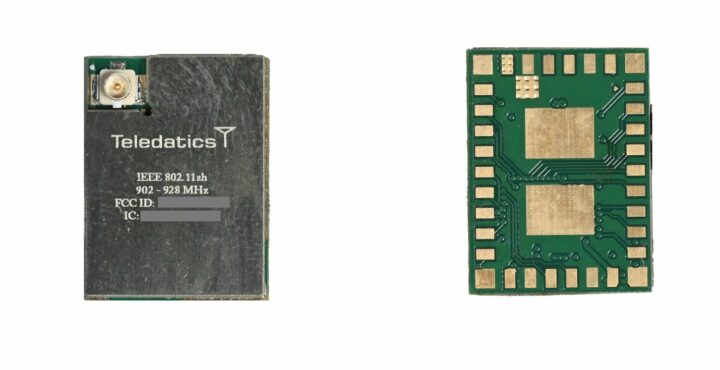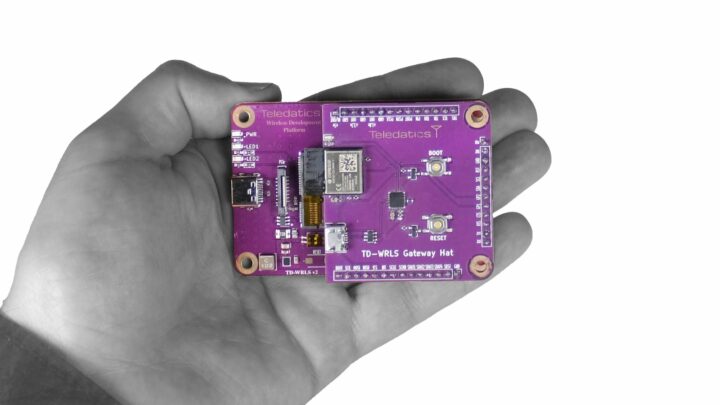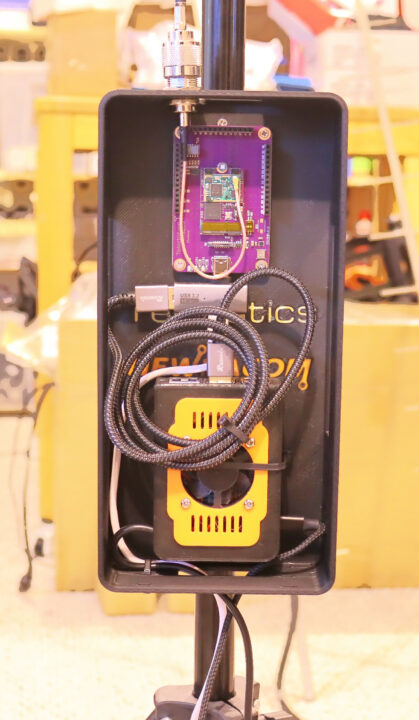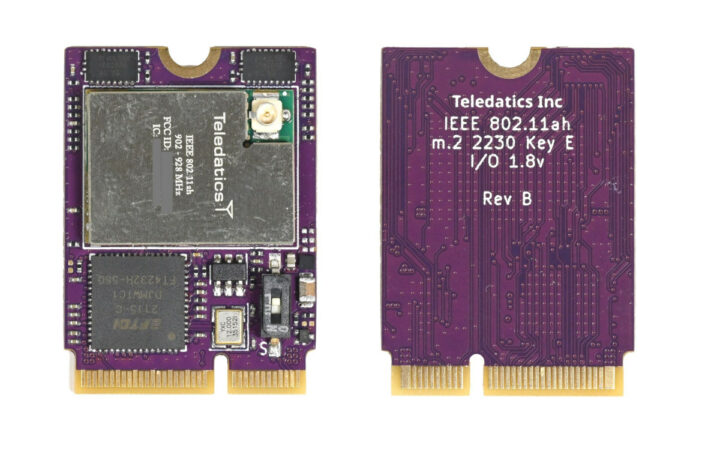Teledatics has launched a crowdfunding campaign for the TD-HALOM HaloMax Wi-Fi HaLow module available in LGA and M.2 form factors for long-range and low-power connectivity, as well as HaLow development boards based on the module and various daughterboards for expansion.

The wireless module, powered by Newracom’s NRC7394 SoC, is the product of a collaboration between Newracom and Teledatics. According to Zac Freeman, VP of Marketing & Sales at Newracom, the HaloMax module is “the highest output power Wi-Fi HaLow module available on the market. The Teledatics TD-HALOM module transmits at the highest allowable FCC power output and offers a Maximum Range HaLow solution.”
Earlier this year, Teledatics broke the record for the longest distance for a Wi-Fi HaLow connection using the HaloMax wireless module and TE Connectivity Yagi antennas. Two Raspberry Pi 4 Model B units were able to communicate over a distance of 106km between Mount Greylock and Mount Wachusett in Massachusetts.
Wi-Fi HaLow adoption is steadily growing. Recently, we have seen modules and devices such as the also NRC7394-based AHST7394S, Quectel’s FGH100M, the Vantron HCAM26 IP camera, and the LILYGO T-Halow. We have also covered Teledactic’s Halo TD-XPAH Wi-Fi HaLow development board featuring an AzureWave AW-HM482 module.
TD-HALOM HaloMax module specifications:
- Newracom NRC7394 Wi-Fi Halow Arm Cortex-M3 microcontroller
- Frequency Range – 902 to 928 MHz
- Operation Modes – AP, station-client, and 802.11s mesh
- Max Throughput – 15 Mbps
- Expansion – SPI, USB, UART
- Onboard u.FL IPEX connector for external antenna
- Power
- Max Power Output: Up to 30 dBm (1 Watt)
- Low Power Mode: 3.5mA
- Dimensions – 13.5 x 18 x 2.4mm
The HaloMax module targets Internet of Things and long-range communications and can find applications in smart agriculture, industrial control, drone, rover telemetry, and HAM radio, including the AREDN network.

Teledatics offers an M.2 2230 network card with the HaloMax module onboard and provides different Wi-Fi HaLow development boards such as the TD-WRLS M.2 Development Platform (compatible with the Raspberry Pi 5) and the TD-TLM1 HaloMax Drone Telemetry board that can be used for real-time drone and rover telemetry over an extreme range.

HaloMax daughterboards can be used to extend the functionality of the TD-WRLS development board and include:
- TD-RPIM2E Raspberry Pi M.2 Daughterboard for connecting HaloMax M.2 cards to a Raspberry Pi 3, 4, and 5
- TD-WWHS Wi-Fi Hotspot daughterboard for extending a 2.4 GHz Wi-Fi/Bluetooth network
- TD-WGPS RTK GPS daughterboard for a long-range GPS location beacon
- TD-WSEN daughterboard for long-range temperature, humidity, volatile organic compounds, and CO2 level sensing
- TD-WBAT daughterboard for a long-range, solar-charged LiPo or Li-Ion battery-powered node
- TD-WETH Ethernet extender daughterboard

The module itself isn’t open-hardware but the design files for the daughterboards are available on GitHub. Software support includes an FTDI SPI Linux driver and software packages for the NRC7394 chip in standalone and host mode. Documentation is quite sparse but there is a Discord server for community support.
The HaloMax project is live on Crowd Supply with a $50,000 funding goal. The HaLow module alone is priced at $34, the TD-WRLS M.2 HaLow development board at $39, and the M.2 2230 Key-E card costs $79. Most of the daughterboards are available for less than $50 and interested parties can purchase antennas right from the Crowd Supply page. All offers attract a $8 shipping fee within the US and $18 to the rest of the world.

Tomisin is a writer specializing in hardware product reviews, comparisons, and explainers. He is very passionate about small form factor and single-board computers.
Support CNX Software! Donate via cryptocurrencies, become a Patron on Patreon, or purchase goods on Amazon or Aliexpress




